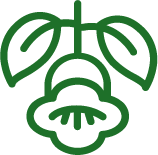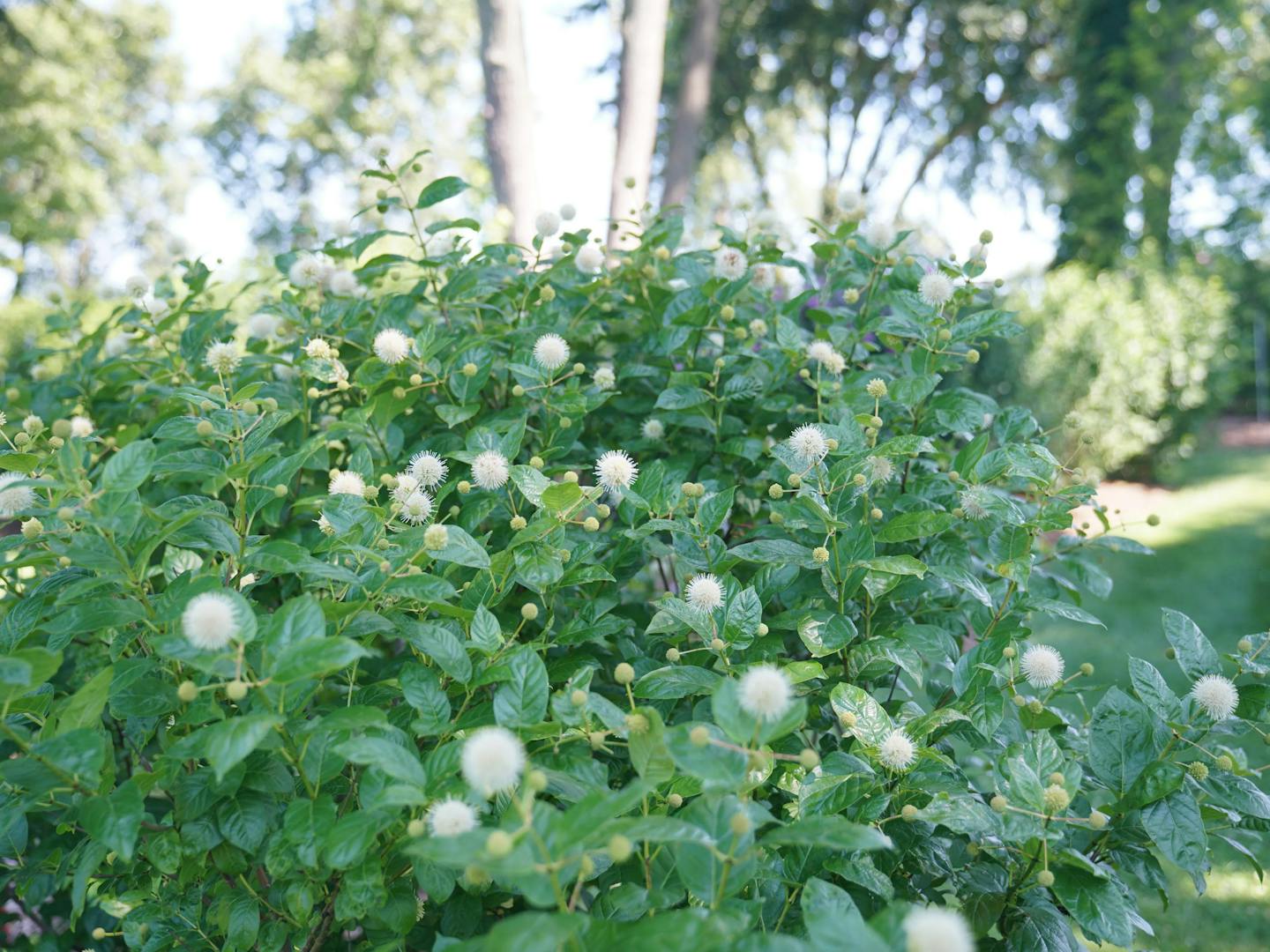Buttonbush
Buttonbush
Cephalanthus occidentalis
A whimsical shrub that thrives in wet environments, Buttonbush is distinguished by its unique spherical white flowers that bloom in summer, resembling tiny starbursts that float above the foliage. This plant is a beacon for wildlife, providing nectar for pollinators and seeds for birds. Its glossy green leaves turn yellow in fall, adding seasonal interest to the waterside.
- Dimensions: 6-12 feet tall, 6-12 feet wide
- Water Use: High, thrives in standing water
- Light Requirement: Thrives in full sun, tolerates partial shade; flourishes in dappled light along water edges
- Soil Moisture: Naturally adapted to wet conditions, ideal for rain gardens and water features
- Ornamental Use: Its distinctive blooms and affinity for water make it an excellent choice for naturalized or water-themed gardens, offering a lush, green backdrop and intriguing texture.
- Wildlife: A haven for pollinators such as butterflies and bees, while its seeds are sought after by various waterfowl and birds.
Details: Buttonbush

Features
Flowers




